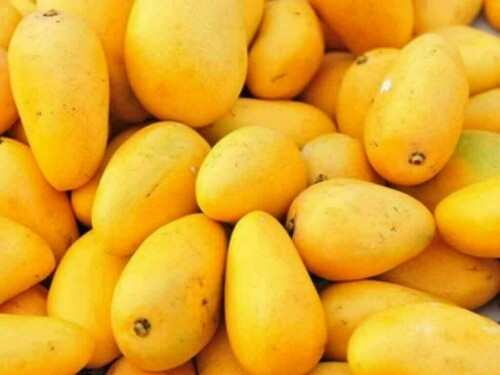Mango Protection Requires Modern Techniques, Say Experts
Progressive farmers and food technologists have emphasized the need for the government to embrace modern techniques and technologies to safeguard mango crops. They highlighted this during discussions, noting the importance of innovation in ensuring the quality and yield of mangoes.
Reduced Mango Yields Due to Climate Change
Nabi Bux Sathio, the Senior Vice President of the Sindh Chamber of Agriculture (SCA), pointed out that mango production experienced a decline this year compared to the previous year, attributing it to multiple contributing elements.
- Premature Fruit Fall: Approximately 15-20% of mangoes were lost due to dust storms and thunderstorms.
- Water Scarcity: A severe shortage of water during the crucial fruiting period exacerbated the problem.
Sathio stressed that climate change and insufficient water resources significantly impacted both the quantity and size of the mango harvest. He also noted that the government has not set specific targets for mango production, classifying it as a fruit rather than a major or minor crop.
Key Mango Producing Areas
In Sindh, mango orchards span roughly 100,000 acres. The primary mango-producing districts include:
- Mirpurkhas
- Tando Allahyar
- Matiari
- Khairpur
- Tando Jam (Hyderabad district)
These areas collectively account for 90% of Sindh’s mango cultivation. In Punjab, Multan leads with 70% of the province’s mango production, while the remaining 30% comes from Bahawalpur and other regions.
Overall, Sindh contributes over 60% of the total mango production in Pakistan, with Punjab primarily growing the Chaunsa variety.
Mango Varieties and Market Availability
Sindh is renowned for its diverse mango varieties, including Sindhri, Chaunsa, Anwar Ratol, Langra, Daseri, Baingan Phalli, and Gulab Khas. The mango season typically runs from May 1 to July 31, after which cold-stored mangoes and varieties from Multan become available.
Sathio urged authorities, including the Indus River System Authority (IRSA) and the Sindh Irrigation Department, to ensure a consistent water supply to orchards during the growing season.
“Farmers rely on this one-and-a-half-month harvest window for their livelihood, having invested nearly 10 months of effort. The fruit requires 90 to 100 days to mature, necessitating four water cycles to achieve proper fruiting, sweetness, weight, and size,” Sathio explained.
Export Potential and Post-Harvest Techniques
Local mangoes are highly sought after internationally. While Sindh primarily exports its mangoes, Punjab’s mangoes are mainly processed into juices, with only a small percentage (2-3%) being exported.
Dr. Aasia Akbar Panhwar, Associate Professor at Sindh Agriculture University (SAU) Institute of Sciences and Technology, emphasized that successful mango export requires scientific methods, not just harvesting ripe fruit.
“Simple post-harvest errors can lead to high rejection rates at international ports,” she cautioned.
The SAU Institute of Sciences and Technology has initiated training programs for farmers, focusing on:
- Proper harvesting techniques
- Hot water treatment (HWT) to eliminate fruit fly larvae and meet phytosanitary standards of countries like Japan and the USA
- Mechanical brushing to remove field residues
- Controlled de-sapping to prevent blemishes
- Quality packaging to maintain humidity, minimize damage, and ensure traceability
Dr. Panhwar noted that exporters who adopted these techniques experienced fewer rejections and secured better prices.
Government’s Role in Centralized Facilities
It was suggested that the government should actively establish centralized mango processing and treatment facilities in key mango-producing regions like Mirpurkhas, Tando Jam, Multan, Rahim Yar Khan, Bahawalpur, and DI Khan.
Smallholder farmers often lack access to essential post-harvest infrastructure, including HWT units, mechanized grading and sorting lines, and export-compliant packaging systems. Government investment in these facilities would ensure compliance with international standards, reduce post-harvest losses, enhance export volumes, increase farmers’ income, and strengthen Pakistan’s position in the global market.
These facilities can also serve as training and demonstration centers, promoting best practices among growers, packers, and exporters.
Mango Protection Strategies
Integrated Pest Management (IPM)
Mangoes can be protected through integrated pest management (IPM), timely harvesting, and post-harvest treatments.
- Pre-harvest: Bagging of fruits, use of pheromone traps, and biological control to minimize insect damage.
- Post-harvest: Careful handling to avoid bruising, hot water or fungicide treatments to prevent decay.
- Cold chain management, hygienic packing, and temperature-controlled transportation.
- Training growers on best practices and monitoring systems.
Phytosanitary Protocols Explained
Phytosanitary protocols are crucial for international trade, preventing the spread of pests and diseases. For mango exports, these include HWT, vapour heat treatment, pest-free area certification, and proper documentation and traceability.
Compliance with these standards, enforced under the International Plant Protection Convention (IPPC), ensures mangoes are free from quarantine pests and minimizes rejection risks, safeguarding the exporting country’s market reputation and access.



Comments (0)
No comments yet. Be the first to comment!
Leave a Comment